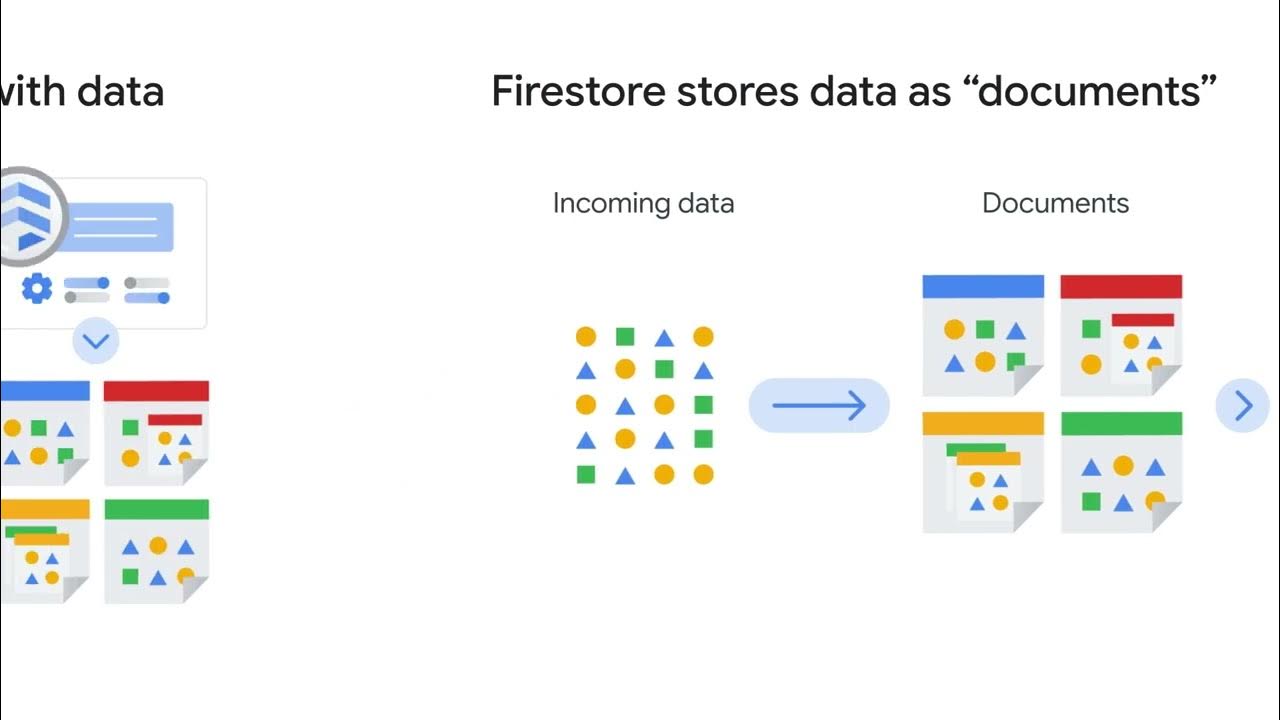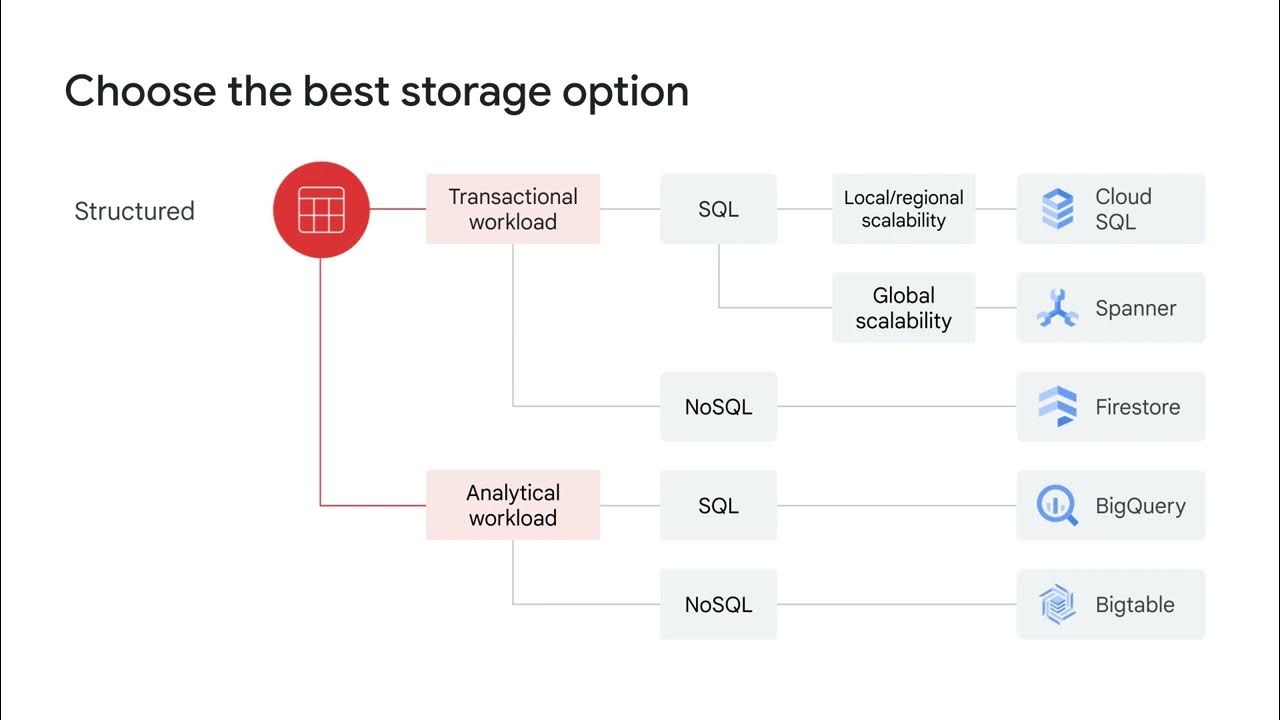How to Structure Your Data | Get to know Cloud Firestore #5
Summary
TLDRIn this episode of Get to Know Cloud Firestore, the speaker explores optimal data structuring for a restaurant-review app. Key topics include the advantages and drawbacks of storing reviews as subcollections versus top-level collections, the implications of using arrays and maps for various attributes, and strategies for managing user access and favorites. The speaker emphasizes the importance of balancing performance, data retrieval efficiency, and cost considerations while navigating the trade-offs in NoSQL design. Ultimately, the video provides practical examples to help developers make informed decisions about data organization in Cloud Firestore.
Takeaways
- 😀 Cloud Firestore requires careful data structuring based on specific rules to optimize performance.
- 🍽️ In a restaurant review app, data can be organized in collections and subcollections for efficiency.
- 📊 Storing reviews as separate documents in a subcollection allows for better querying and data management.
- 📉 Keeping reviews in a single restaurant document can lead to unnecessary data loads and limits on document size.
- 🔍 Using a top-level collection for reviews allows cross-restaurant queries, enhancing data accessibility.
- ⚖️ Decisions on data structure should balance ease of access, query performance, and cost of document reads.
- 🗂️ Storing flags for restaurant features can be done using individual fields or a map, depending on query needs.
- 👥 Managing user access can be achieved through arrays or maps, but be cautious of data exposure.
- ❤️ For user favorite restaurants, denormalized data can improve performance but requires careful synchronization.
- 🔄 A separate top-level collection for favorite restaurants simplifies queries and data updates.
Q & A
What is the main focus of the video?
-The video focuses on how to structure data in Cloud Firestore for a restaurant-review application, providing various examples and strategies for optimal data organization.
Why is it not ideal to store all reviews within a restaurant document as a map or array?
-Storing reviews within a restaurant document can lead to excessive data being retrieved during searches, potential data limit issues, and difficulties in querying reviews effectively.
What are the advantages of using subcollections for storing reviews?
-Subcollections allow for easier management of individual reviews, support shallow queries to reduce read costs, and simplify access control based on the parent document.
What are the benefits of having reviews in a top-level collection?
-A top-level collection facilitates easier queries across multiple restaurants, allows for quick searches by review authors, and reduces the need for complex data management associated with subcollections.
How can review snippets improve performance when displaying restaurant details?
-By storing review snippets directly within the restaurant document, the application can load the restaurant's details with fewer document reads, thus improving performance and reducing costs.
What considerations should be made when storing flags for restaurant attributes?
-Using individual fields or a map is recommended for storing flags, but developers should be mindful of the limitations of `array_contains` queries if considering arrays.
What are the security implications of storing access control lists directly in a document?
-Storing access control lists in a document can expose sensitive user data; it may be more secure to keep this information in a separate subcollection or as a map where roles are associated with user IDs.
What is the trade-off of denormalizing user favorites into a map of restaurant details?
-While denormalization can simplify retrieval of favorite restaurants, it increases data redundancy and requires careful management to keep all instances updated when restaurant details change.
Why might a separate top-level collection for user favorites be advantageous?
-A separate collection for user favorites allows for straightforward queries to retrieve all favorites for a user or all users who favorited a restaurant, improving performance and simplifying data management.
How does the choice of data structure impact the performance and scalability of the application?
-The chosen data structure influences read costs, query efficiency, and data management complexity, all of which can significantly affect the application's performance and scalability as user interaction increases.
Outlines

This section is available to paid users only. Please upgrade to access this part.
Upgrade NowMindmap

This section is available to paid users only. Please upgrade to access this part.
Upgrade NowKeywords

This section is available to paid users only. Please upgrade to access this part.
Upgrade NowHighlights

This section is available to paid users only. Please upgrade to access this part.
Upgrade NowTranscripts

This section is available to paid users only. Please upgrade to access this part.
Upgrade NowBrowse More Related Video

What is a NoSQL Database? How is Cloud Firestore structured? | Get to know Cloud Firestore #1

Firestore in a minute

Firestore, a NoSQL document store

Google Cloud infrastructure

FlutterFlow — Connecting and Configuring Firebase to Your App | FlutterFlow NoCode Training 2022

Structured and unstructured data storage
5.0 / 5 (0 votes)